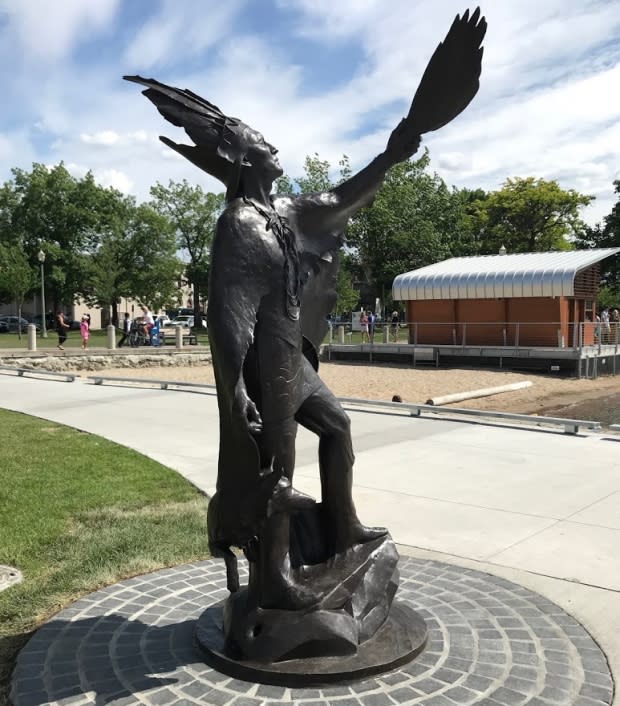How this B.C. sculptor takes a wider approach to history when making statues
The debate over which statues should be taken down may be new to some, but it's a topic Crystal Przybille has thought deeply about for years.
The Kelowna, B.C.-based artist's "unsettling" journey began in 2012 when she was commissioned to create a sculpture of Father Pandosy, the founder of Okanagan's first permanent European settlement.
"I started to recognize just what was left out of the history books," she told Chris Walker, host of CBC's Daybreak South.
She said it made her reflect on how statues often commemorate a narrow version of history, disregarding the experiences of those historically on the margins, specifically Indigenous people.
"[Canada's history] is uncomfortable to look at," said Przybille. "But it doesn't mean we shouldn't look at it. And when we look at it, we need to understand it better."
There was another flashpoint in the debate over statues of colonial figures Thursday, when a group of Conservative MPs, including former party leader Andrew Scheer, held a rally defending a statue of John Macdonald, Canada's first prime minister, in Regina.
They were met by protesters calling for the statue's removal.
It followed the toppling of a statue of Macdonald in Montreal on Aug. 29.
'Tell a larger story'
Przybille went forward with the sculpture of Pandosy — which was originally her idea — though she decided to incorporate elements of Indigenous mythology after consulting with the local Westbank First Nation.
"I didn't want to be creating another weight on the history of colonialism in this area," said Przybille.

Charles Pandosy, a French Catholic priest, established the Immaculate Conception Mission in 1859 on the traditional lands of the Syilx/Okanagan people, near what is now known as Mission Creek.
According to the Father Pandosy Mission, the settlement quickly became an agricultural success and a "community hub to settlers and First Nations peoples" alike.
However, recent research has cast doubt on this depiction of the French missionary's relationship with the local Indigenous population.
David Jefferess, a professor at the University of British Columbia's Okanagan campus, says oral and written evidence suggests Syilx parents pulled their children from the mission's school after one child was killed and others faced violent punishment at the hands of missionaries.
Przybille said her conversations with members of the Westbank First Nation opened her eyes to Pandosy's complicated history and the enduring legacy of colonialism in the Kelowna area.
"We tried to integrate something into the sculpture that would tell a larger story than the one that everybody knew here about Father Pandosy being kind of a folk hero," she said.
Etched into Pandosy's bronze shawl are the four Syilx food chiefs — Black Bear, Salmon, Bitterroot and Saskatoon — as well as the Syilx spiritual guide, Coyote.
The Okanagan Historical Society commissioned the sculpture to commemorate the 150th anniversary of Pandosy's mission.

'The layers in history'
A few years later, the Westbank First Nation asked Przybille to sculpt Syilx Chief Charlie Sʷknc̓ut, a contemporary of Pandosy's whose descendants still live in the Kelowna area.
The statue was unveiled in a ceremony last year.
As with the Pandosy memorial, several figures from Syilx culture are represented in the bronze sculpture of Chief Sʷknc̓ut, along with items, like the chief's vest, that nod to the trading relationship his people had with European newcomers.
Przybille hopes the statue makes people more curious to learn about Syilx history and the impact settlement has had on the nation's culture.
As for the broader debate over which Canadian figures deserve to be honoured in bronze and steel, she hopes people approach the conversation with "curiosity rather than outrage."
"It's about learning to see the layers in history, and what it means for different people," Przybille said.


